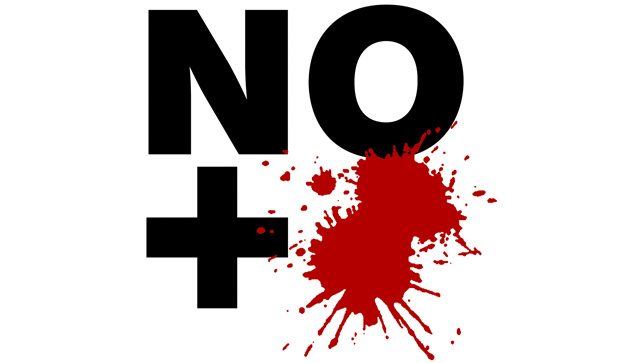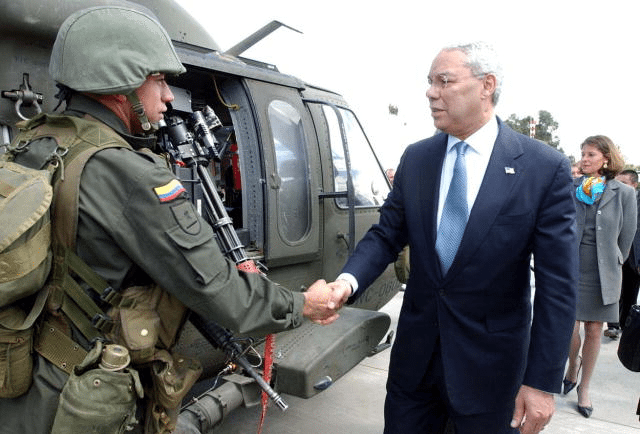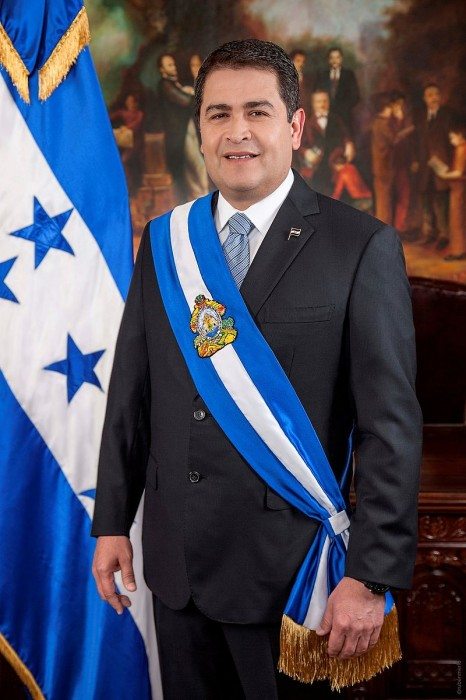Know what happens when a war on drugs is launched across Latin America? War erupts across Latin America.
And yet, after years of failed policy, you still hear people arguing that what’s needed in Central America is more funding for a militaristic campaign against criminals and cocaine dealers. Even the president of Honduras himself argued just this week that the United States needs to help Central America double down on its heavy-handed strategy.
Let me remind President Juan Orlando Hernández, however, that “what’s past is prologue.”
The first war zone created by this approach erupted in Colombia, a major producer of cocaine. As narcotraffickers like Pablo Escobar grew in mythic stature, and cartels like the one in Medellín became as volatile as the FARC, the U.S. and Colombian governments decided to simply utilize the same military tactics they were using against communist rebels to deal with the new threat.
Even after the Berlin Wall crumbled, the U.S. government and its Latin American partners continued on with their business as usual, merely swapping the raison d’être from the Cold War to the War on Drugs.
With the Cold War over and a growing military-industrial complex to feed, the U.S. Department (along with former Colombian President Andrés Pastrana) devised Plan Colombia, a $5 billion-plus program of mostly U.S. military aid and training to combat Colombia’s cocaine producers and leftist guerrilla groups. The result was more of the same. The U.S. government maintained its funding and training of Colombian death squads, who achieved some positive outcomes but only through more bloodshed.
Considering Plan Colombia a success, and faced with growing insecurity south of the border, the United States decided to unleash the program on Mexico, where in 2008 former Mexican President Felipe Calderón signed on to the Mérida Initiative, which basically funds similar military-style crackdowns on narcotraffickers, only this time throughout Mexico. In the years since Mérida’s inception, Mexico has seen between 60,000 to 100,000 people killed, while thousands of disappearances.
Around the same time that Mérida was working its black magic in Mexico, the U.S. government launched the Central America Regional Security Initiative (CARSI), the third incarnation of the United States’ militarized solution to narcotrafficking. The countries of highest interest for CARSI are Guatemala, El Salvador and Honduras, the so-called “Northern Triangle,” a region experiencing an explosion in drug-related gang violence.
If you’ve been paying attention up to this point, you can guess what happened next. The works: more gangs, more crime, more rapes, more murders, more kidnappings and, of course, death squads.
There was even a coup in Honduras. (More on that another day.)
And now, while his country finds itself in the midst of a war with a losing strategy, President Hernández thinks it best to up the funding for that disastrous strategy.
Here’s how the president answered when asked how the United States should help solve a crisis it helped create (my translation):
Honduras has been in emergency for a decade, probably more. Why? Because the United States and Colombia conducted important operations in the fight against drugs. Afterwards Mexico did the same. Then the phenomenon shifted to the northern part of Central America, within Guatemala, El Salvador and Honduras. It is generating a serious problem for us that, leading to this migration.
If we work together on this, like it worked in Colombia, like it worked in Mexico, I’m certain that with the effort Honduras is making, already cleaning up certain zones, I’m certain we’ll come out much faster.
“Like it worked in Colombia,” where a violent crackdown led to increased production in neighboring Peru—what analysts call the “balloon effect”? “Like it worked in Mexico,” still one of the most bullet-riddled places in Latin America?
The example President Hernández and others fail to cite is Nicaragua. Nicaragua has among the lowest murder and crime rates in all of Latin America, despite sharing a 573-mile-long river border with Honduras, the bloodiest country in the world.
The Economist recently explained what makes Nicaragua so special:
In the realm of policing, the lessons embodied in Nicaragua’s police force are the most valuable. Instead of mano dura, or the militarised iron-fist policies of its northern neighbours, it offers a ‘friendly hand’ to prevent similar levels of gang penetration. Instead of jailing wayward youths, it offers them counselling, education and job opportunities. In one slum policemen are to be found clapping along awkwardly with baggy-clothed breakdancers.
Thanks in large part to the government’s approach to crime and drug trafficking, Nicaragua boasts a murder rate eight times lower than in Honduras. Similar approaches have been adopted in Colombia and Brazil, with similar results: confidence in the justice system went up and crime dropped. After inaugurating its first community police units, São Paulo saw its murder rate decrease from 69 per 100,000 citizens back in 1999 to just 15 this year.
That’s why organizations have called for the demilitarization of the campaign against drug traffickers throughout Latin America. It makes sense that a community-based approach would succeed where military-style approaches have failed, because when you go to war, you get war.
To be fair to President Hernández was right when he said that “the United States, Canada, the consumer countries, have to help us get out of this problem.” Of course, Americans could stop doing blow or the U.S. government could revamp the domestic War on Drugs, but neither is likely to happen, not soon anyway.
That said, if nothing’s going to be done at home to alleviate the suffering abroad, then the American people and their government are at the very least politically and morally obligated to devise a strategy that will dampen the crises in Central America created by their consumption.
Clearly, military-style crackdowns are not the solution. Violence will only beget more violence.


A community policing approach treats criminals like members of the societies they come from, which is what they are. Instead of reacting to crime, the approach seeing success in Nicaragua focuses on crime prevention, giving children and young adults the resources and opportunities to escape a life of crime. After all, whether it’s the 11-year-old boy from Tegucigalpa riding atop La Bestia on his way to the Texas border, the 13-year-old boy in San Pedro Sula working as low-level street criminal for the Maras, or 15-year-old girl in Juticalpa who fears leaving her home for fear of being kidnapped, rapped and killed—all are victims of the same conditions, the same broken government, the same market for drugs, the same failed policies.
If anything’s going to change in Honduras, El Salvador, Guatemala and Mexico, the governments of said countries must commit themselves to a new approach to the criminality, corruption, trafficking (of all kinds) and general instability that plagues the region. Such an approach should emulate the non-militaristic approach adopted not only in Nicaragua, but in cities across Latin America, from Managua to São Paulo.
It should also rethink the rationale for a war on drugs in general, removing the stigma attached to criminalization and addressing drug use as a health issue. On this, the experience currently being conducted in the country of Uruguay, the U.S. states of Colorado and Washington, and now the District of Columbia will prove instructive.
Then, and only then, should the U.S. government commit further funding to combat drug trafficking in Mexico and Central America.
Whether the U.S. military-industrial complex will slice revenues to save hundreds of thousands of lives in Central America remains to be seen. And it’s highly unlikely that the right-wing regimes of Latin America who rely on the U.S. military-industrial complex to maintain power will relinquish those tools in the name of the people they’re supposed to serve.
“Plan Central America” might work, but only for the powers that be—not for the people desperate for change.
***
Hector Luis Alamo, Jr. is a Chicago-based writer. You can connect with him @HectorLuisAlamo.




